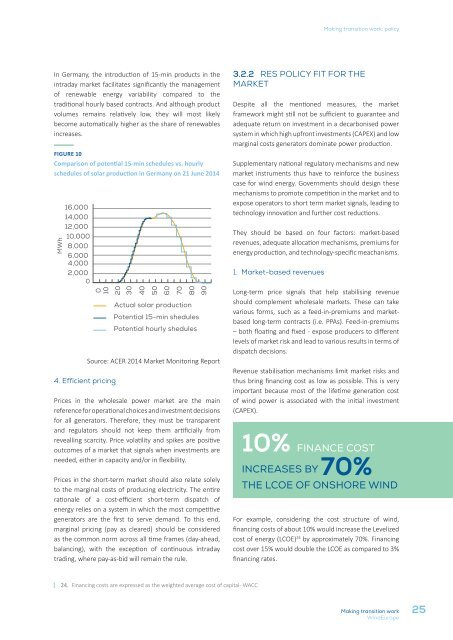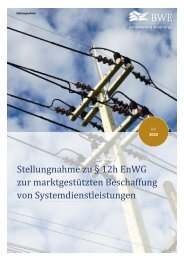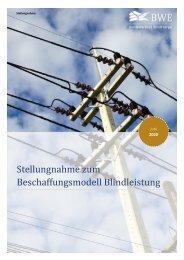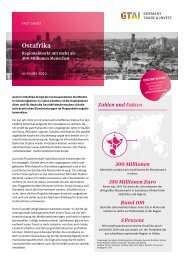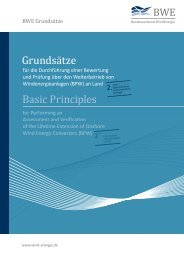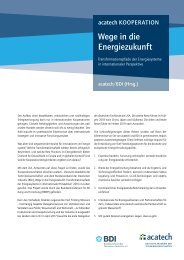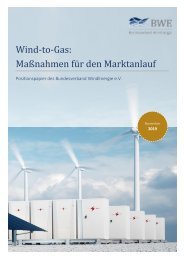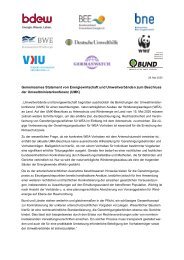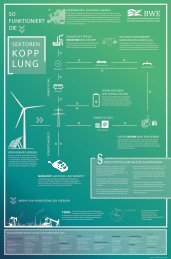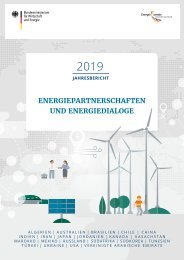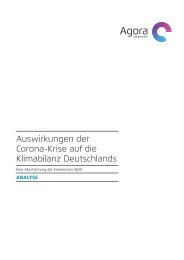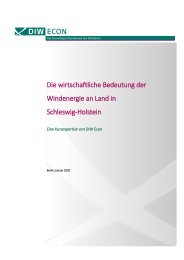Making transition work - Wind Europe
This report provides clear elements on how to make transition work in the coming decade. It provides recommendations to policymakers on how to facilitate a swift transformation of the energy system and considers the policies that will make Europe the best choice for those investing in renewables.
This report provides clear elements on how to make transition work in the coming decade. It provides recommendations to policymakers on how to facilitate a swift transformation of the energy system and considers the policies that will make Europe the best choice for those investing in renewables.
Create successful ePaper yourself
Turn your PDF publications into a flip-book with our unique Google optimized e-Paper software.
<strong>Making</strong> <strong>transition</strong> <strong>work</strong>: policy<br />
In Germany, the introduction of 15-min products in the<br />
intraday market facilitates significantly the management<br />
of renewable energy variability compared to the<br />
traditional hourly based contracts. And although product<br />
volumes remains relatively low, they will most likely<br />
become automatically higher as the share of renewables<br />
increases.<br />
FIGURE 10<br />
Comparison of potential 15-min schedules vs. hourly<br />
schedules of solar production in Germany on 21 June 2014<br />
MWh<br />
16,000<br />
14,000<br />
12,000<br />
10,000<br />
8,000<br />
6,000<br />
4,000<br />
2,000<br />
0<br />
0<br />
10<br />
4. Efficient pricing<br />
20<br />
30<br />
40<br />
50<br />
60<br />
70<br />
80<br />
Actual solar production<br />
Potential 15-min shedules<br />
Potential hourly shedules<br />
90<br />
Source: ACER 2014 Market Monitoring Report<br />
Prices in the wholesale power market are the main<br />
reference for operational choices and investment decisions<br />
for all generators. Therefore, they must be transparent<br />
and regulators should not keep them artificially from<br />
revealling scarcity. Price volatility and spikes are positive<br />
outcomes of a market that signals when investments are<br />
needed, either in capacity and/or in flexibility.<br />
Prices in the short-term market should also relate solely<br />
to the marginal costs of producing electricity. The entire<br />
rationale of a cost-efficient short-term dispatch of<br />
energy relies on a system in which the most competitive<br />
generators are the first to serve demand. To this end,<br />
marginal pricing (pay as cleared) should be considered<br />
as the common norm across all time frames (day-ahead,<br />
balancing), with the exception of continuous intraday<br />
trading, where pay-as-bid will remain the rule.<br />
3.2.2 RES POLICY FIT FOR THE<br />
MARKET<br />
Despite all the mentioned measures, the market<br />
frame<strong>work</strong> might still not be sufficient to guarantee and<br />
adequate return on investment in a decarbonised power<br />
system in which high upfront investments (CAPEX) and low<br />
marginal costs generators dominate power production.<br />
Supplementary national regulatory mechanisms and new<br />
market instruments thus have to reinforce the business<br />
case for wind energy. Governments should design these<br />
mechanisms to promote competition in the market and to<br />
expose operators to short term market signals, leading to<br />
technology innovation and further cost reductions.<br />
They should be based on four factors: market-based<br />
revenues, adequate allocation mechanisms, premiums for<br />
energy production, and technology-specific meachanisms.<br />
1. Market-based revenues<br />
Long-term price signals that help stabilising revenue<br />
should complement wholesale markets. These can take<br />
various forms, such as a feed-in-premiums and marketbased<br />
long-term contracts (i.e. PPAs). Feed-in-premiums<br />
– both floating and fixed - expose producers to different<br />
levels of market risk and lead to various results in terms of<br />
dispatch decisions.<br />
Revenue stabilisation mechanisms limit market risks and<br />
thus bring financing cost as low as possible. This is very<br />
important because most of the lifetime generation cost<br />
of wind power is associated with the initial investment<br />
(CAPEX).<br />
10% FINANCE COST<br />
INCREASES BY 70%<br />
THE LCOE OF ONSHORE WIND<br />
For example, considering the cost structure of wind,<br />
financing costs of about 10% would increase the Levelized<br />
cost of energy (LCOE) 24 by approximately 70%. Financing<br />
cost over 15% would double the LCOE as compared to 3%<br />
financing rates.<br />
24. Financing costs are expressed as the weighted average cost of capital- WACC<br />
<strong>Making</strong> <strong>transition</strong> <strong>work</strong><br />
<strong>Wind</strong><strong>Europe</strong><br />
25


